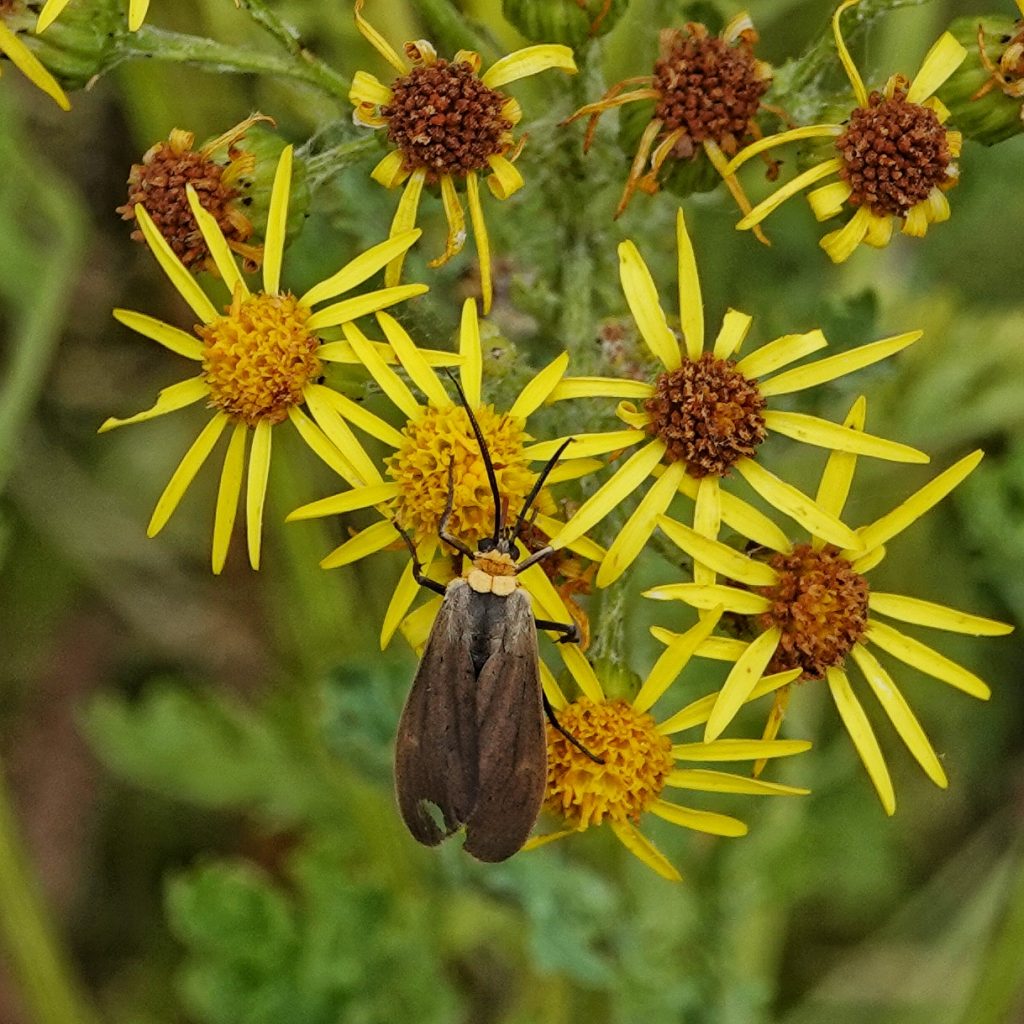
Due to a variety of reasons, mostly having to do with general laziness and a desire to spend the hours after sunset watching tv with Pam, I haven’t done much night mothing this year. But I do periodically get lucky and find a nocturnal moth in a sheltered location during daylight, and I always keep an eye out for diurnal moths on my walks. Which is how I found these wonderful Yellow-collared Scape Moths on Monday, whilst walking the newly remodeled Steigerwald NWR with Morgan. There were several of them nectaring in a large patch of tansy ragwort right next to the parking lot, and fortunately they were fairly tame and allowed me to get close enough to photograph them. Unfortunately, since I’d just gotten out of the car and I hadn’t switched on my photographer brain yet, and my camera was still set for the bright sunlight closeups I’d taken the last time I was out, I was shooting with far too fast of a shutter speed, and far too low of an f-stop for the distance and overcast I was dealing with, so the photos leave something to be desired.
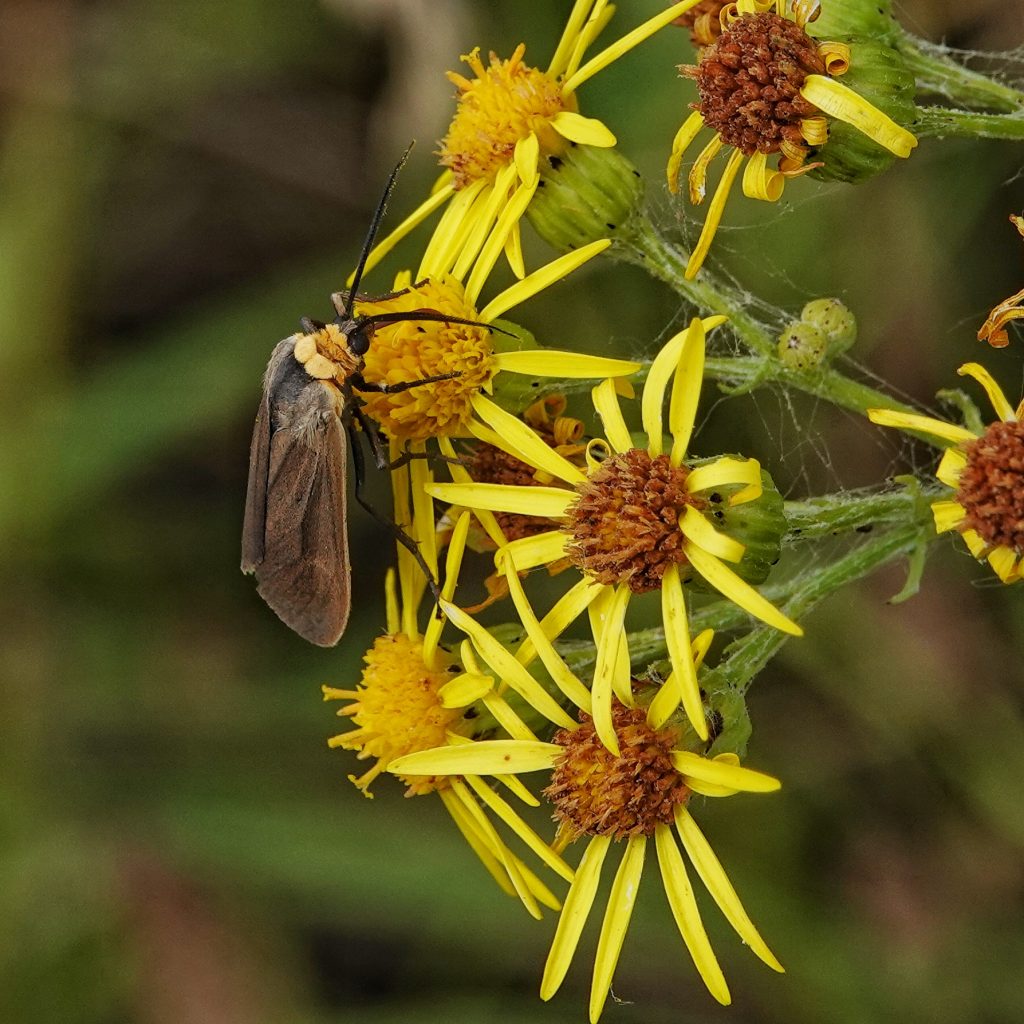
Because of a combination of aposematic coloring, which advertises the possible presence of defense chemicals (primarily cardiac-glycosides and pyrrolizidine alkaloids, usually ingested by nectaring on plants containing those substances, since the larvae feed on grasses and sedges), and possible wasp mimicry, these moths are not as regularly preyed upon by various insectivores as many other moths. Thus they are not as spooky as many other tastier moths. And they probably utilize the flash of translucent hindwing when they take off to startle would be predators. Even though they are primarily diurnal, I have had them visit me at UV lights, especially early at night on very hot days.
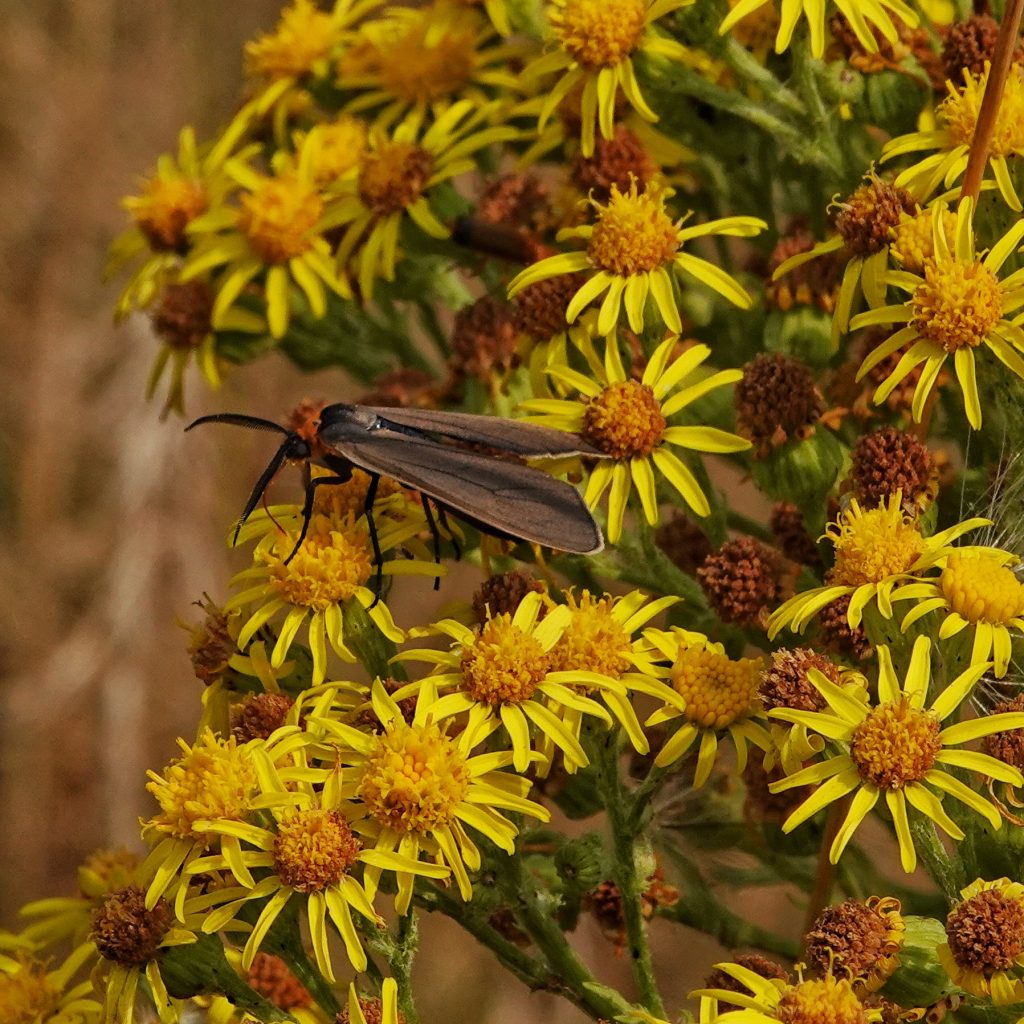
It is interesting to note that Cisseps fulvicollis adults can be found flying and ovipositing in areas where it is too cold in winter for their larvae, despite a certain level of freeze tolerance, to survive. This means that there must be a northward trending migration by the adults, possibly in search of areas where there has been climate change, a tendency that undoubtedly pre-dates our current climate change. Nature is always testing its limits, looking for niches to exploit, sacrificing the individuals for the sake of the species as a whole. And it’s always possible that some eggs laid in less than optimal conditions will manage to survive anyway, and pass those genetic adaptations along to their offspring.
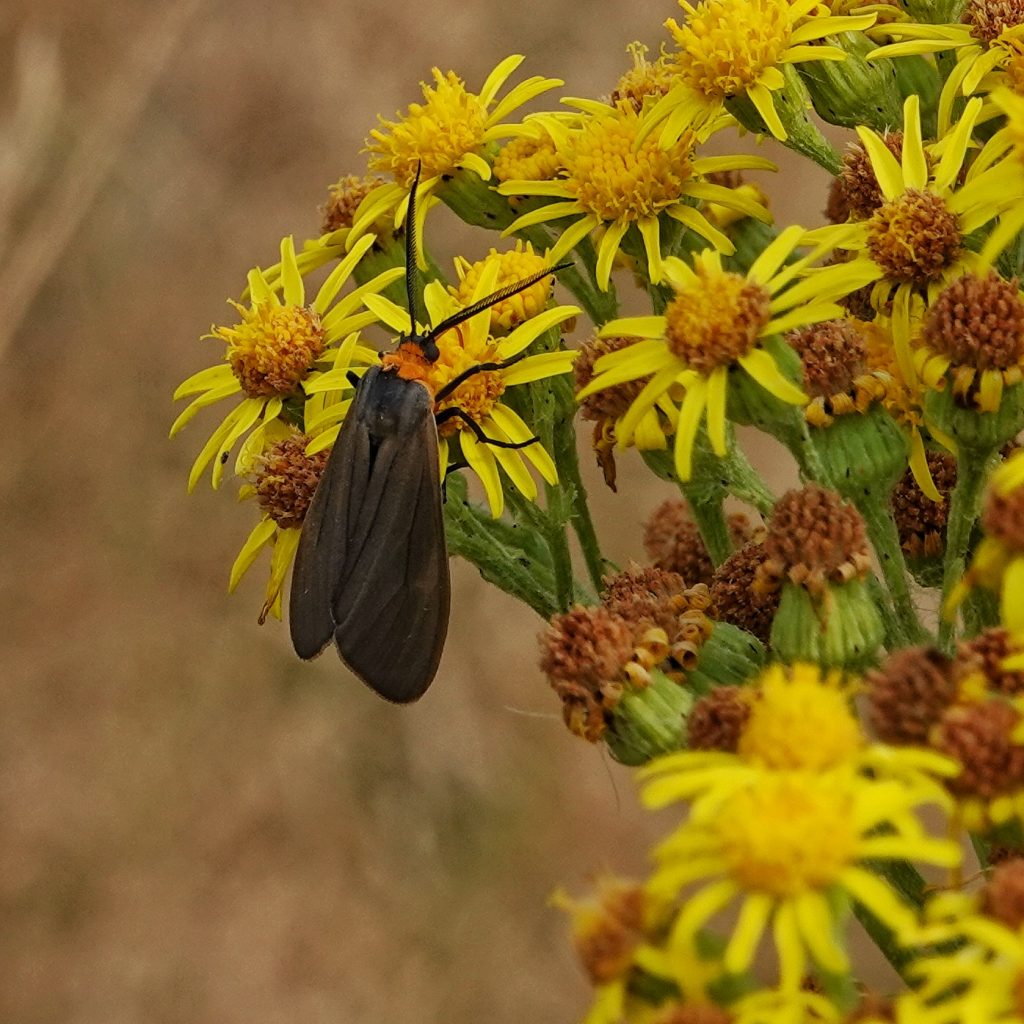
At the moment this species is usually placed in the family Erebidae, subfamily Arctiinae, sub tribe Ctenuchina, but some taxonomists would elevate Arctiinae to family status, making ctenuchids (pronounced ‘tenukid’) a subfamily, and there are some that advocate granting them full family status in Ctenuchidae. Though Erebidae as a whole is monophyletic (meaning every clade evolved from the same genetic branching) changes in taxonomy are almost certain because molecular data is showing hitherto unknown relationships. There are only two known ctenuchids in our region, this one and Ctenucha rubroscapus, and I will profile C. rubroscapus next. Ctenucha virginica may be present, since it has been found in eastern BC, and is expanding its range, so I included it in the similar species, even though, to the best of my knowledge, it has not been verified within the PNW as I have, somewhat arbitrarily, defined it.

Description– Small to medium sized (fw length 15-21mm) moth with dull, uniformly black forewings with a thin, light colored margin, a dull black thorax and a yellow/orange collar; abdomen iridescent blue black; hindwing black with translucent grey to white central area.
Similar species–Ctenucha rubroscapus has a shiny blue thorax with orange margins, a solid black hindwing; C. virginica has a shiny, dark blue thorax, solid black hindwing, and the collar is triangular, rather than a band.
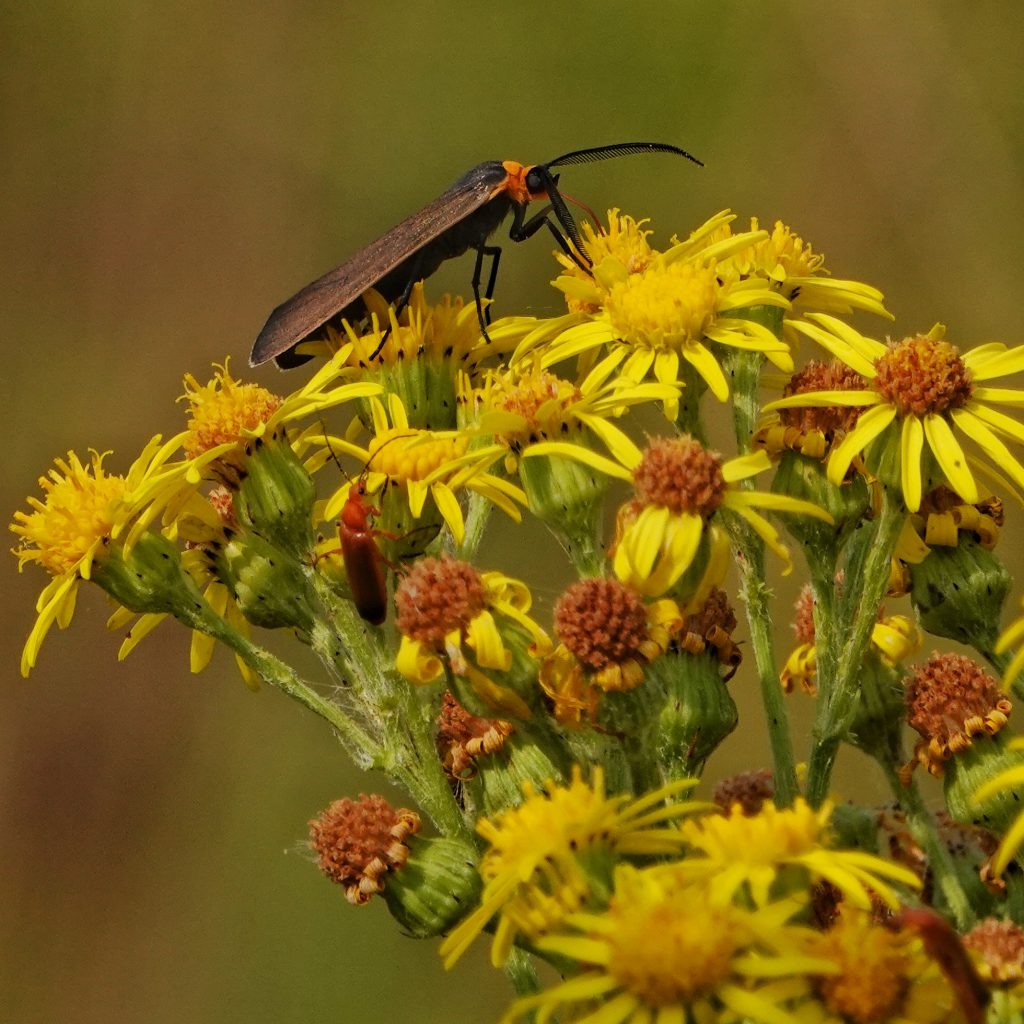
Habitat-Grasslands, fields, wet meadows and prairies, forest openings, and along roads.
Range-North America north of Mexico; region wide in appropriate habitats.
Eats-Larva feed on grasses and sedges; adults nectar at a wide variety of Asteraceae, including goldenrod and tansy ragwort.
Eaten by– Caterpillars are parasitized by the Ichneumonid wasp Itoplectis conquisitor and Ichneumon sp. of the group winkleyi; adults are prey for insectivores not deterred by the wasp mimicry and aposematic coloring.
Adults active-May-September
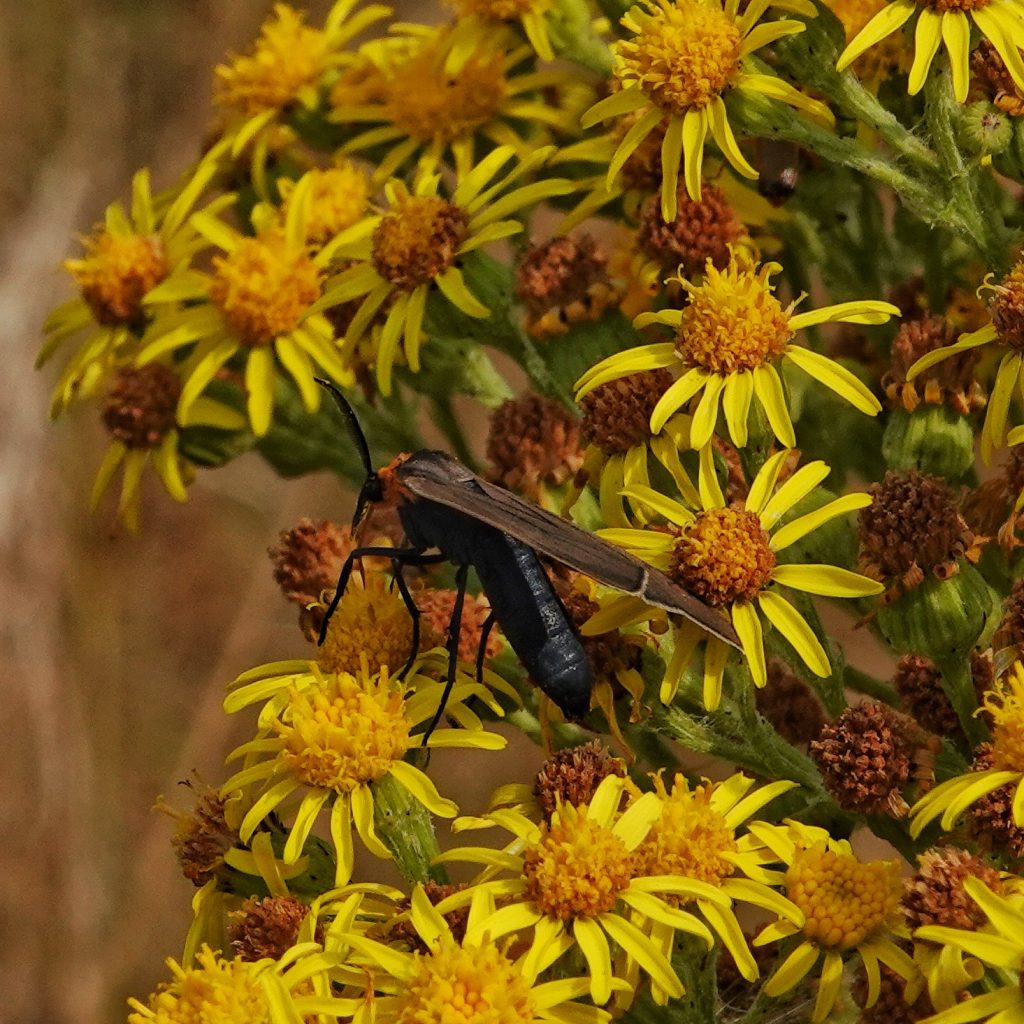
Life cycle-Univoltine; probably overwinters as a late instar caterpillar with a freeze tolerance, but I can’t access the paper that talks about this.
Etymology of names–Cisseps is probably an anagram of the original name for this genus, which was Scepsis. But that name had to be changed because it had originally been assigned to a genus of horseflies. The specific epithet fulvicollis is from the Latin words for ‘reddish yellow neck’, referring to the yellow/orange collar. The common name scape moths refers to the elongated 1st antennal segment, which is called the scape.
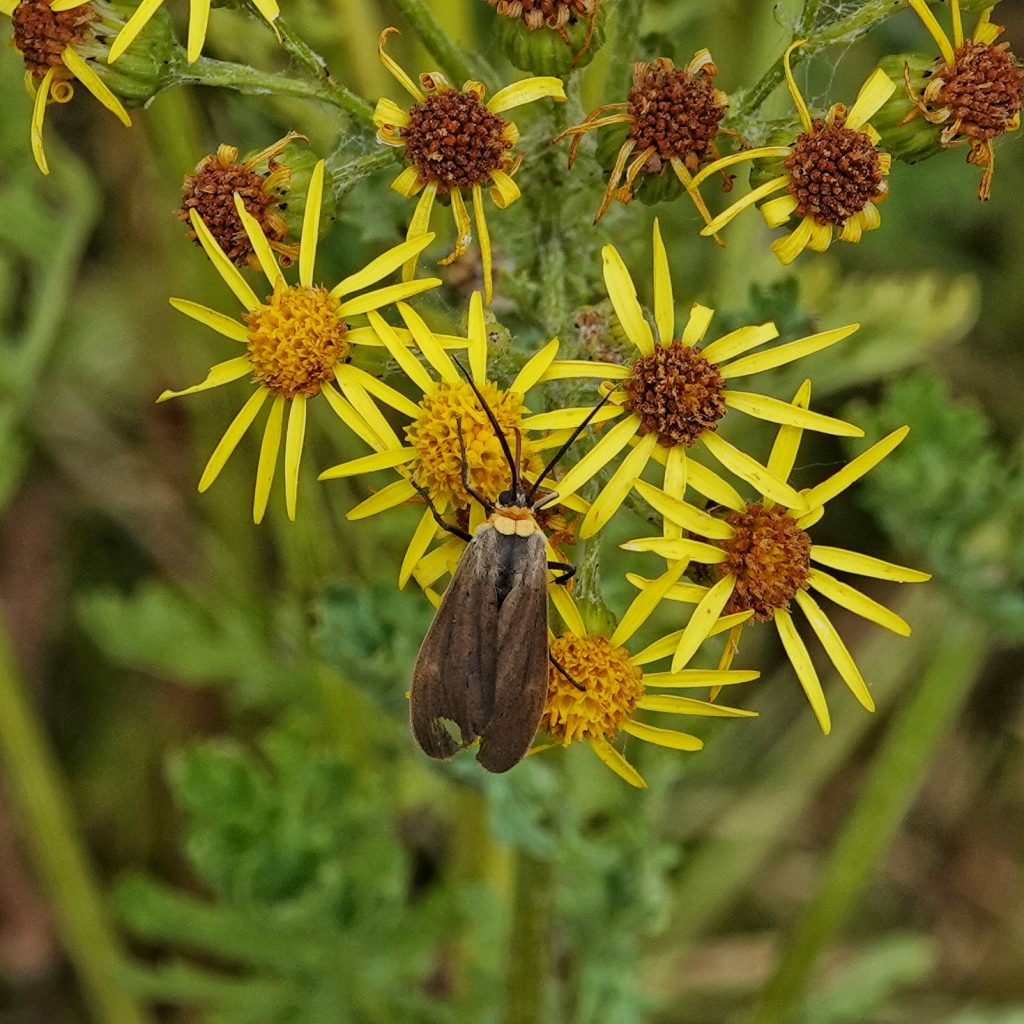
https://bugguide.net/node/view/447
http://mothphotographersgroup.msstate.edu/species.php?hodges=8267
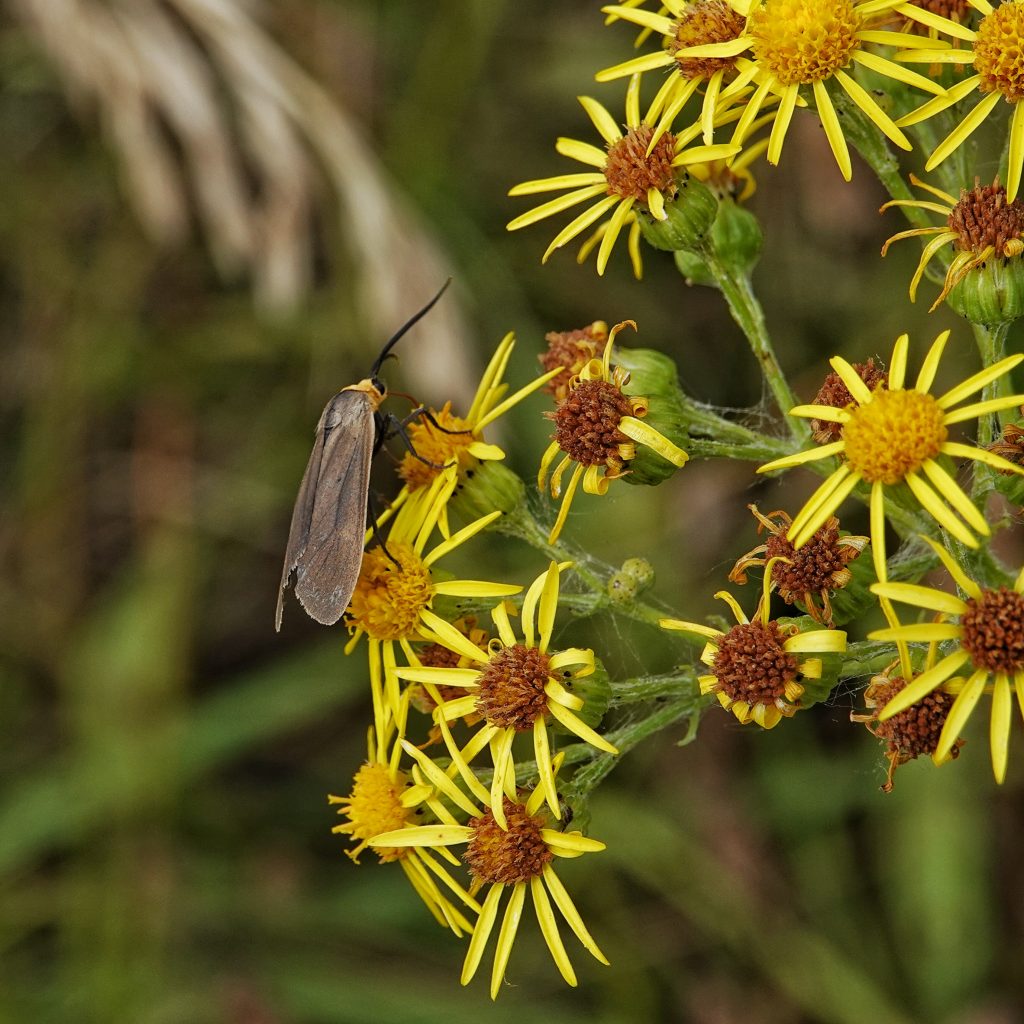
1 thought on “Cisseps fulvicollis (Yellow-collared Scape Moth)”